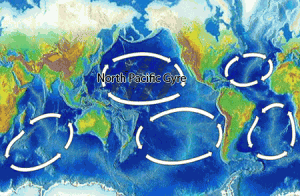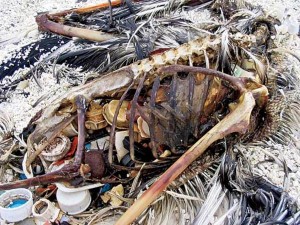After a long 6 hour bus ride from Old Town Cuzco, we finally arrived in not-so-attractive Puno, a large dusty and chaotic city on Lake Titicaca. The city is in the middle of a lot of construction so about 90% of the buildings and hostels don´t have completed roofing or plumbing. That said, here in this unexpected city is where I found one of my favorite hostels thus far. We had read about this very friendly hostel in the lonely planet but didn´t expect it to be that amazing. As soon as Nicole and I stepped out of the taxi, Jenny the owner and mother ran across the street and greeted us with a warm hug and kisses on the cheek. She felt like my own mother. Her hostel was tickety boo. It was evident how attentive she was. At night she would put hot water bottles in the bottom of our bed and she even provided us with soap, toilet paper and towels which is unheard of in most hostels. She arranged our island hopping tour on Lake Titicaca which we took the next day.
Lake Titicaca is one of the highest navigable lakes in the world…3,800 meters high in fact. It´s fresh water hosts frogs that grow as large as one feet long. Nice! It also acts as a thermal system for Puno because without it Puno would be way too cold to live in. Our tour included visiting 3 different islands including the famous floating reed islands. These islands are like an indigenous disneyland. Everything..and I mean everything is made out of reeds that grow in the lake. The islands are very squishy and your foot sinks down with every step. The best is walking around with no shoes on! A small number of families live on these floating islands which are only about 100 meters wide. Four members will sleep in the same reed hut, even in the same bed…both parents and children. I imagine it would get very interesting during the teens years! But a girl and a guy cannot date if they are from the same floating island. They have to be from different ones.
The island my tour group visited was not a floating island was more a dry, rocky mountain in the middle of the lake that took over 3 hours to get to by boat. Nicole and I stayed with a family with a couple from New York who were fluent in Spanish. Lucky us! These families speak Quechua, the indigenous language of Peru. All visitors are divided amongst the families on this island so each family will get 3 groups of tourists each month. This makes it financially fair for all the families living on the island. We read it was respectful to tip and bring gifts of thanks, things that are very hard to come by on the island like fresh fruit, tuna, rice and notebooks for the children. So we all stocked up on goodies when we left the boat terminal.
Upon arrival at the island, all the mothers were waiting for us as some knitted and others spun wool. They do this all day long and even when they´re walking. We greeted our 27 year old ´mother´, Clara, with a handshake and exchanged coca leaves, a tradition on these islands. A tiring 25 minute hike up the steep mountain took us to her cute, run-down casa. She lives on a hill amongst farm animals and homemade rock walls that act as fences. Her two boys, Mario a 4 year old and Jimmie a 6 year old, greeted us and started jumping on us with excitement. Her house has dirt floors, a non-flush toilet, no insulation and electricity that runs on a battery. Clara´s kitchen, where she spends most of her time, is a dark hole with dirt floors, a wood fire oven and a log that she uses as her cooking stump. She has literally one shelf where all her cutlery and pots sit and she gets her water from a well. Seeing this gave me the urge to fix up her kitchen and provide the family with simple things like more shelving, better flooring and especially improved ventilation due to the carbon monoxide poisoning from the wood fire oven. The smoke fills up the hut so badly that it creates this thick smoke that stings your eyes and makes it extremely difficult to breath.
My group was provided with 3 meals…lunch, dinner and then breakfast the next morning. Every meal consisted of basically the same thing, just cooked differently. For example, the families are so poor they cannot afford meat or chicken and can barely afford eggs so their source of protein is definitely lacking. Their staples are quinoa, potatoes, sweet potatoes, vegetable soup, pancakes and coca tea, all of which are very starchy. Yet, we enjoyed every meal we had because Clara and most locals on this island have a way of making the simplest of foods have a lot of flavor.
Before our dinner all the tourists hiked to the top of this beautiful ruin the watch the sunset. There Nicole and I saw our good ol´friend Justin who we did the Machu Picchu Jungle trek with. After our hike we all helped prepare dinner with Clara´s mother and father who made an appearance and even used their very old hands to skin the soiled-up potatoes. We all ate together, but my tour group sat at a bench and Clara´s family sat on the dirt ground and ate with their hands. After dinner is the tradition of all the tourists dressing up in the local´s traditional clothing and then going to a hall to dance. I´ve never felt so much weight from clothing on my body before. Clara wrapped two skirts around me, three blouse-like shirts and then two thick flower-embroidered belts. I felt like I was wearing a corset! Their was a live band that played Quechua music and all the local families danced with the tourists. We even got everyone in the dancing hall to do the giant train line. Dancing there is very different from North America. It consists of holding hands in a circle with 2 to 5 people, stepping forward and backward to the music while swinging the hands. Very simple and easy to follow!
We said our goodbyes the next morning, bright and early and then took the boat to another island where we hiked around for about 2 hours, had a delicious lunch and snapped wonderful views of the still lake. It was a wonderful way to experience Lake Titicaca in 2 days and 1 night, to see the people´s culture, their struggles and their way of everyday life. I highly recommend this special adventure for all backpackers!


